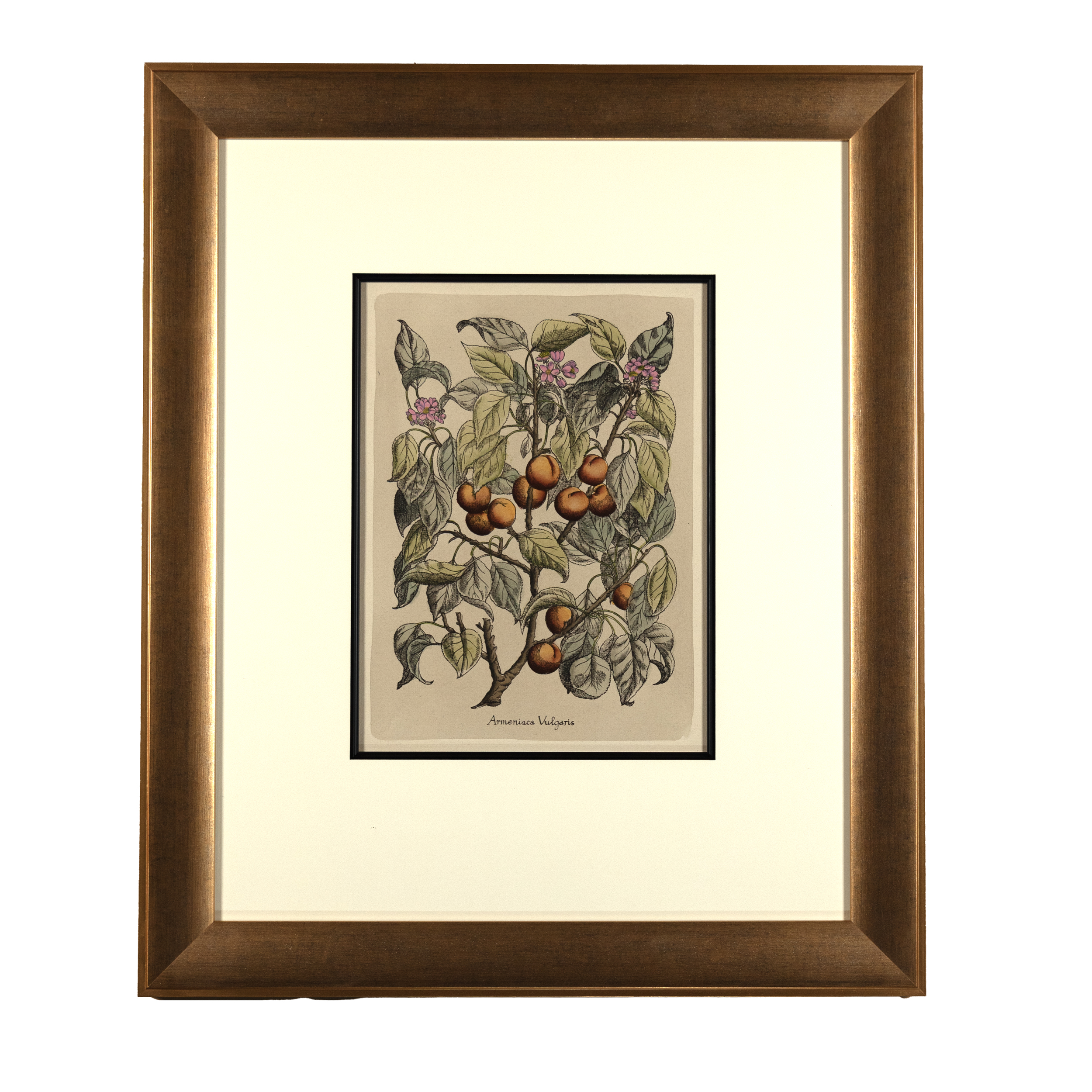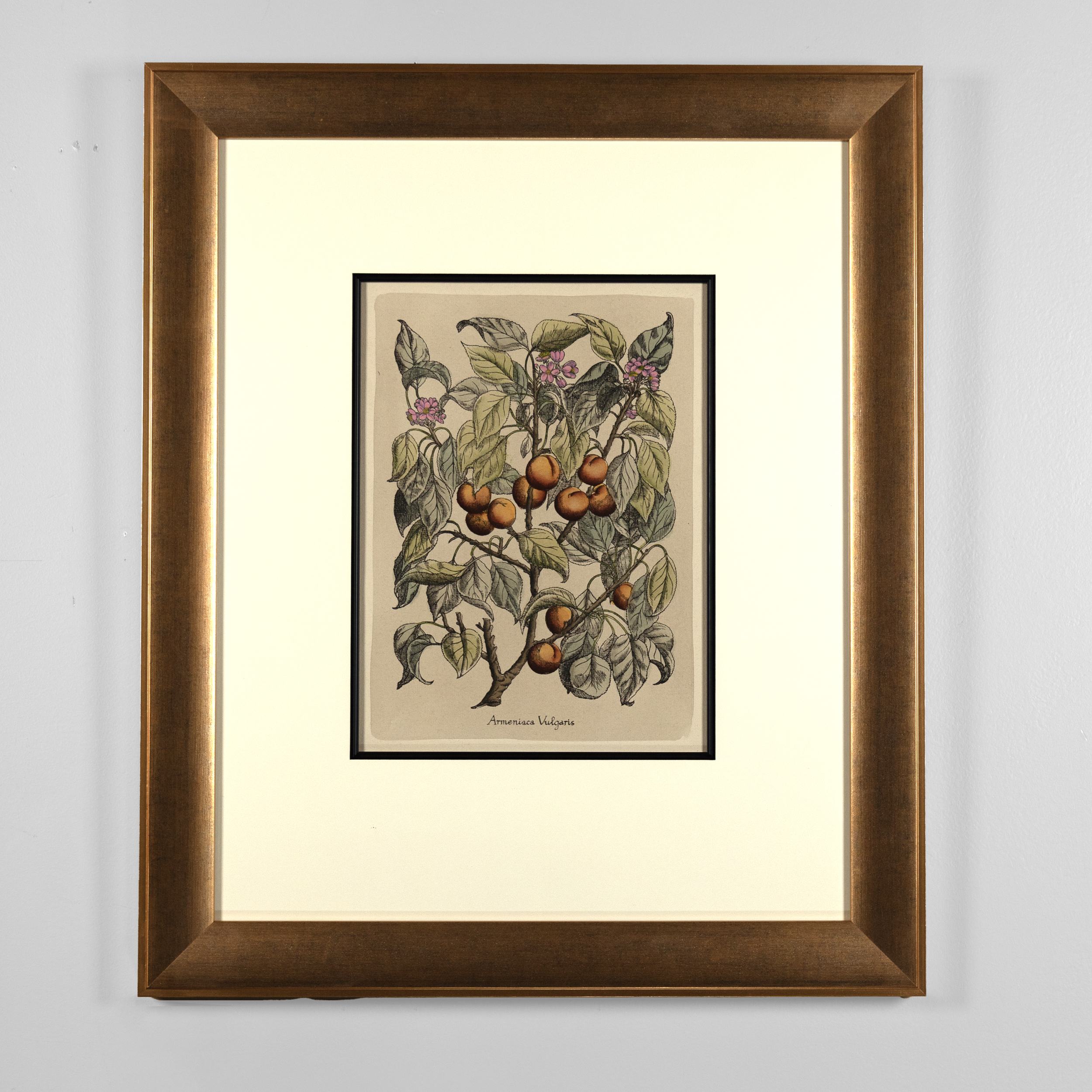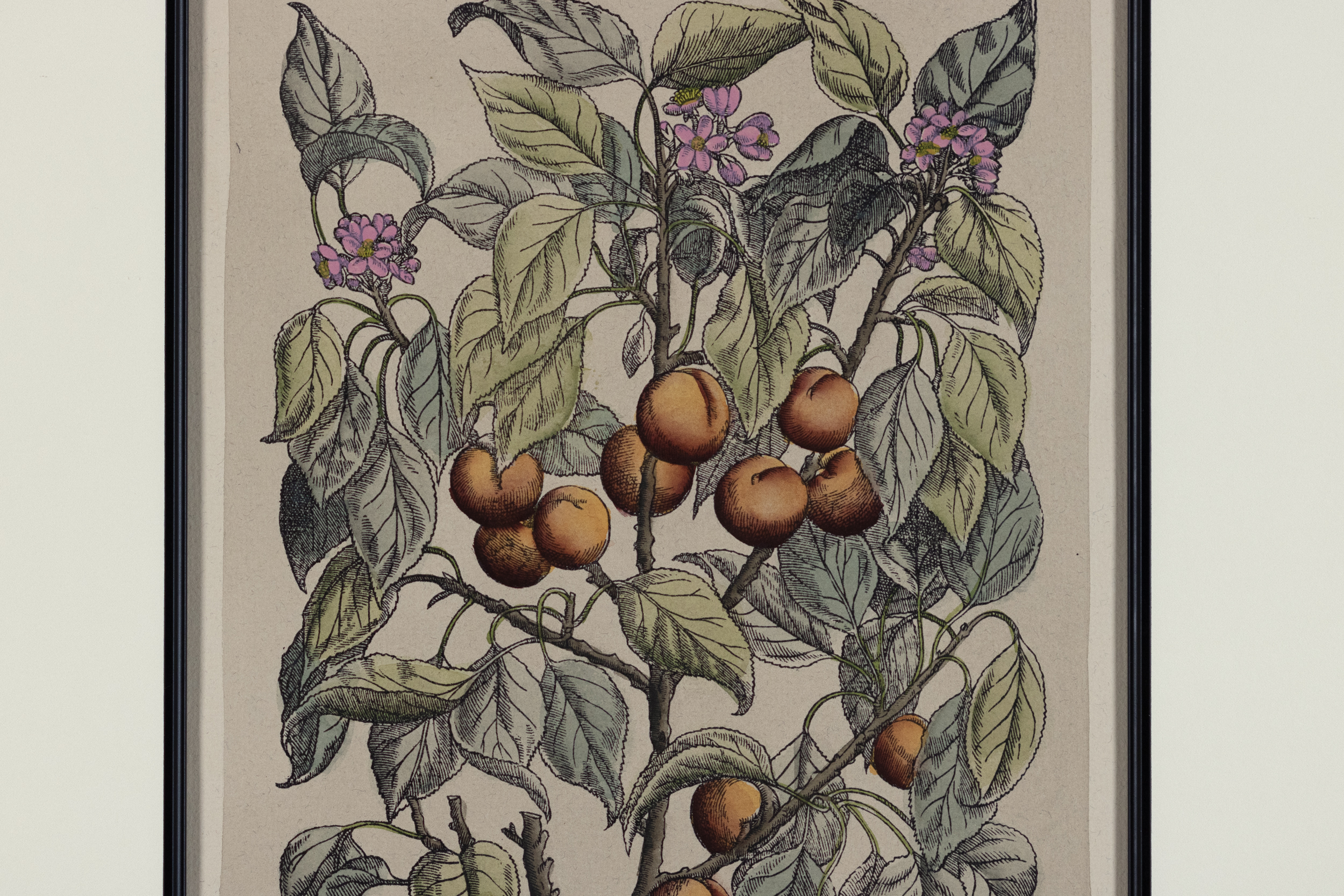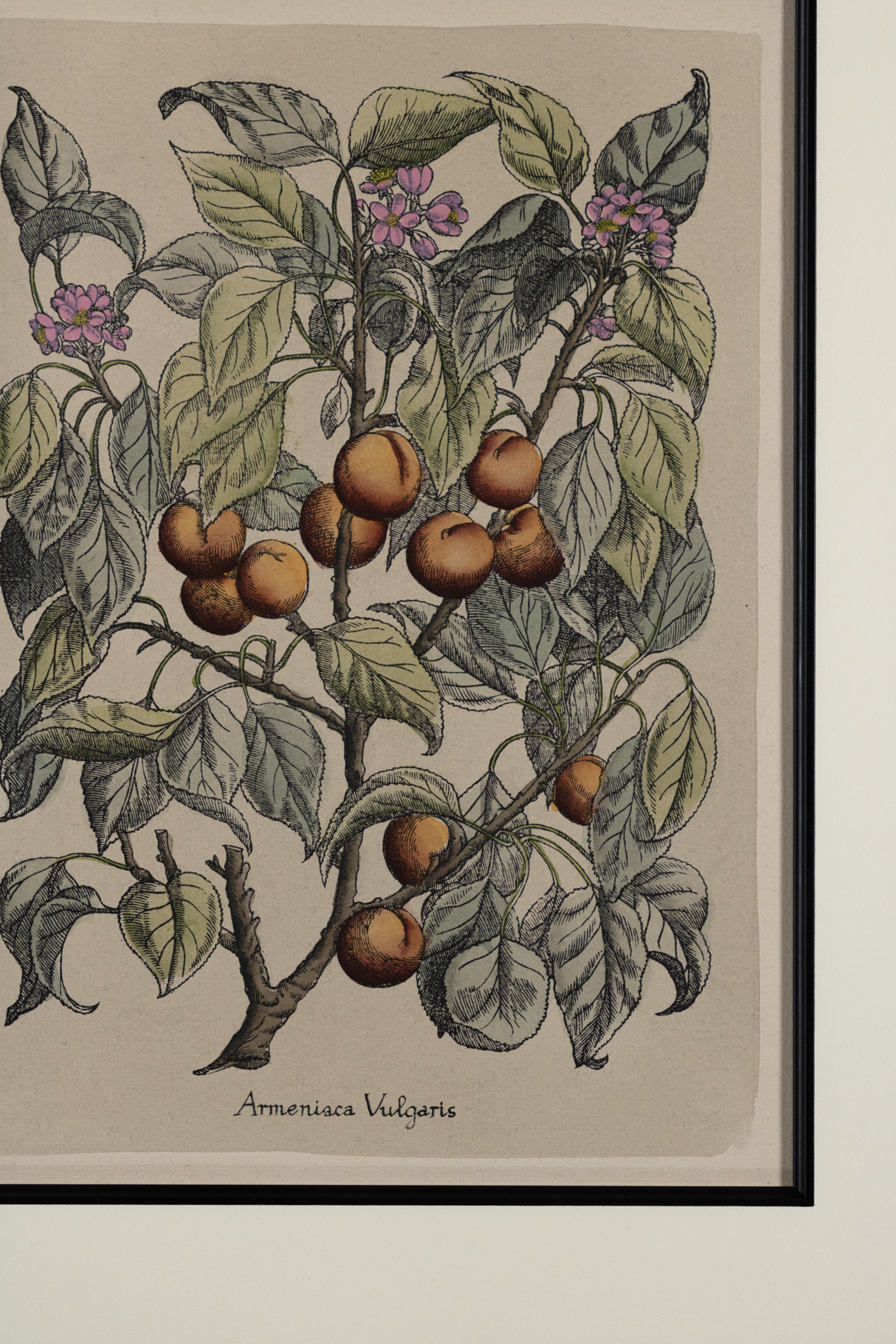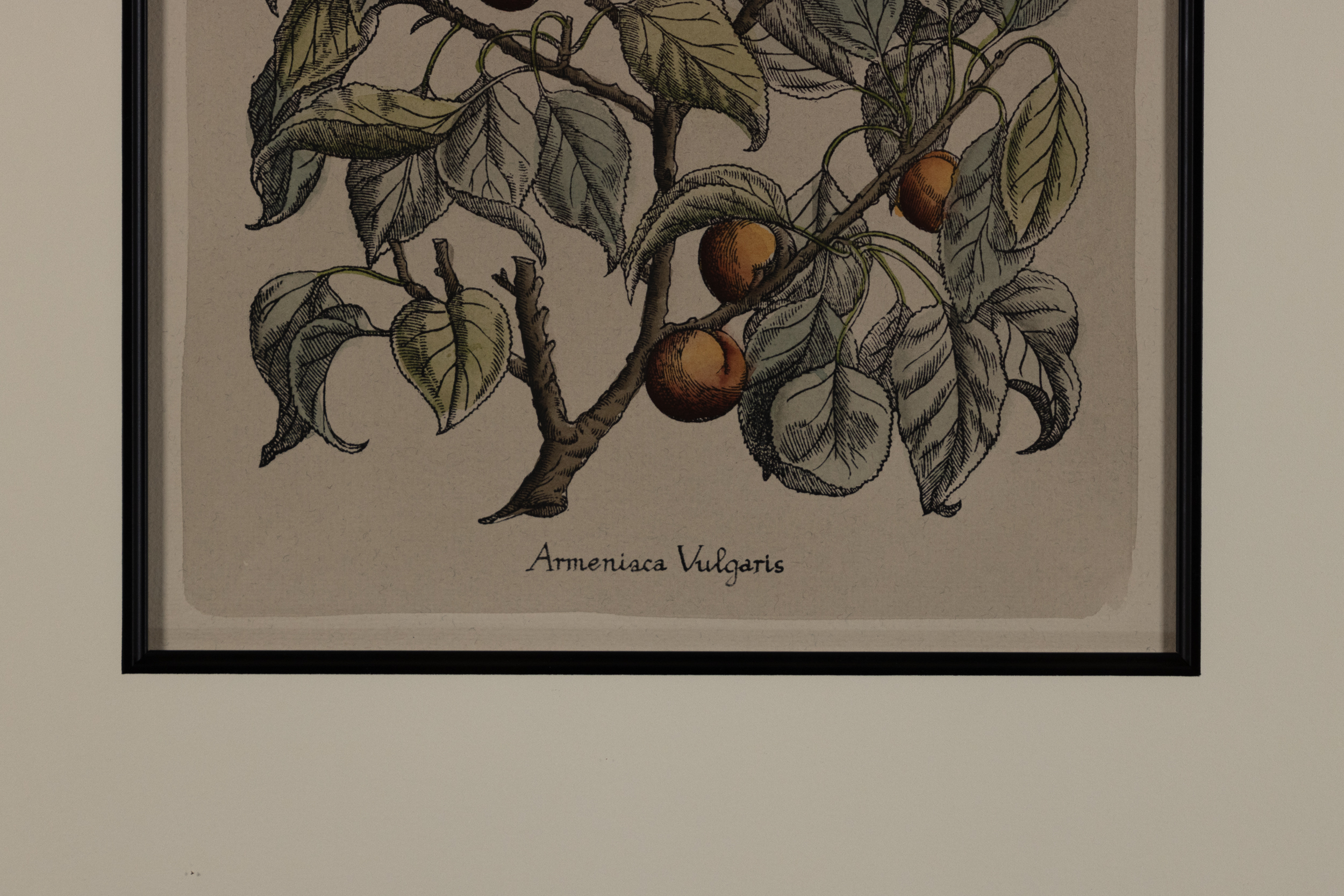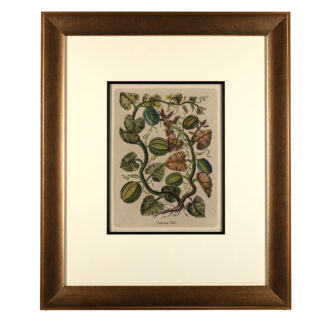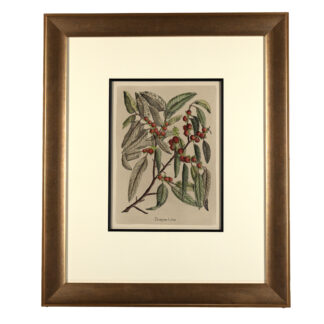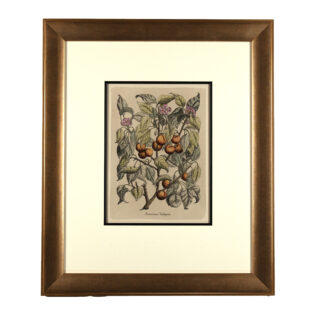Description
This print is part of a set of eight, displaying Armeniaca Vulgaris, or the common apricot. The lithograph details the distinct orange fruit, nestled among broad green leaves and accented with delicate pink flowers, characteristic of its spring bloom, circa 1890. 1 The print is double matted and presented in a gold frame.
height: 24.5 in. (62 cm),
width: 20.5 in. (52 cm),
depth: 2 in. (5 cm)
Further readings and sources:
- Binomial nomenclature, the formal system of naming species of living things, was developed by Carl Linnaeus in the mid-18th century. Each species is assigned a unique two-part name: the genus name, which is capitalized, and the species name, which is not. This system, introduced in Linnaeus’ seminal work ‘Species Plantarum’ in 1753, brought a standardized and consistent method to the classification and naming of plants and animals, which is still the cornerstone of modern taxonomy. The nomenclature serves as a universal language among scientists and scholars, allowing for clear and precise communication regarding biological research. The enduring legacy of Linnaean taxonomy is evident in these exquisite botanical lithographs, where the artistry of the past converges with scientific discovery.
See The Father of Taxonomy, Science, Source: Roy Porter, Ed., The Biographical Dictionary of Scientists (Oxford University Press, ed. 2, 1994). link: The Father of Taxonomy ↩

